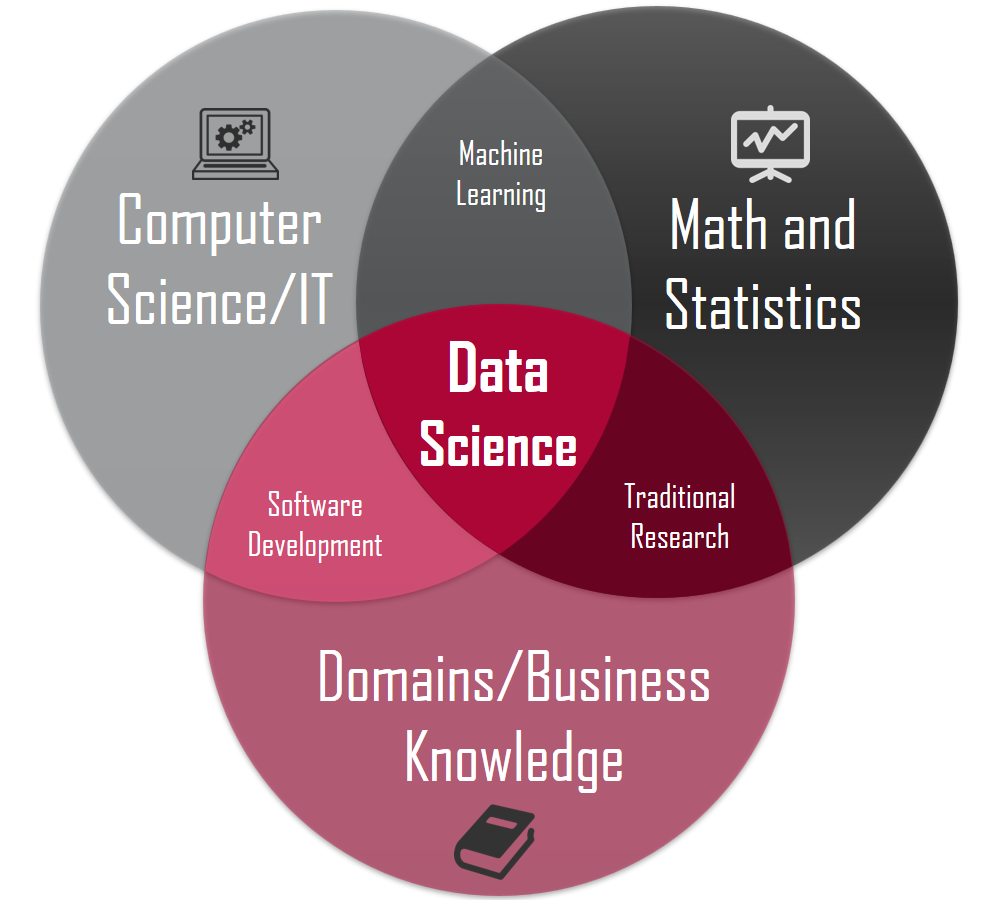Data Science :
Data science is an interdisciplinary field that uses scientific methods, processes, algorithms and systems to extract knowledge and insights from noisy, structured and unstructured data, and apply knowledge from data across a broad range of application domains.
It combines math and statistics, specialized programming, advanced analytics, artificial intelligence (AI), and machine learning with specific subject matter expertise to uncover actionable insights hidden in an organization’s data. These insights can be used to guide decision making and strategic planning.
Data Science Life Cycle :
Data science’s life cycle consists of five distinct stages, each with its own tasks :
- Capture: Data Acquisition, Data Entry, Signal Reception, Data Extraction. This stage involves gathering raw structured and unstructured data.
- Maintain: Data Warehousing, Data Cleansing, Data Staging, Data Processing, Data Architecture. This stage covers taking the raw data and putting it in a form that can be used.
- Process: Data Mining, Clustering/Classification, Data Modeling, Data Summarization. Data scientists take the prepared data and examine its patterns, ranges, and biases to determine how useful it will be in predictive analysis.
- Analyze: Exploratory/Confirmatory, Predictive Analysis, Regression, Text Mining, Qualitative Analysis. Here is the real meat of the life cycle. This stage involves performing the various analyses on the data.
- Communicate: Data Reporting, Data Visualization, Business Intelligence, Decision Making. In this final step, analysts prepare the analyses in easily readable forms such as charts, graphs, and reports.
Prerequisites for Data Science :
Here are some of the technical concepts you should know about before starting to learn what is data science.
1. Machine Learning
Machine learning is the backbone of data science. Data Scientists need to have a solid grasp of ML in addition to basic knowledge of statistics.
2. Modeling
Mathematical models enable you to make quick calculations and predictions based on what you already know about the data. Modeling is also a part of Machine Learning and involves identifying which algorithm is the most suitable to solve a given problem and how to train these models.
3. Statistics
Statistics are at the core of data science. A sturdy handle on statistics can help you extract more intelligence and obtain more meaningful results.
4. Programming
Some level of programming is required to execute a successful data science project. The most common programming languages are Python, and R. Python is especially popular because it’s easy to learn, and it supports multiple libraries for data science and ML.
5. Databases
A capable data scientist needs to understand how databases work, how to manage them, and how to extract data from them.

For more interesting Blogs visit : GTECHTV


